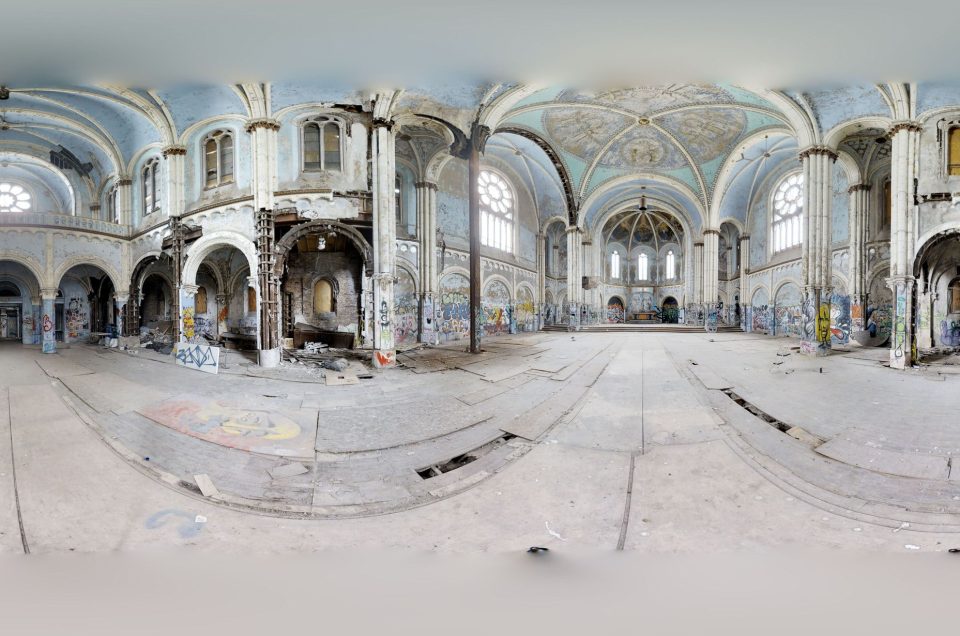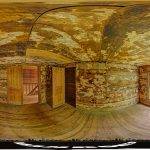St. Elizabeth’s Hospital: A Reflection of History and Transformation
Embark on an enthralling urban exploration adventure with our latest feature: an incredible 360-degree panoramic view of the historic St. Elizabeth’s Hospital, nestled in the heart of the District of Columbia. This mesmerizing visual experience offers an unparalleled opportunity to delve into the architectural grandeur and enigmatic allure of one of the city’s most intriguing landmarks. As you navigate through this panoramic journey, immerse yourself in the rich tapestry of stories and secrets embedded within the walls of this iconic institution. Perfect for urban explorers and history enthusiasts alike, our detailed, high-resolution imagery brings you up close and personal with St. Elizabeth’s Hospital, all from the comfort of your screen. Join us in uncovering the hidden wonders of urban landscapes, starting with this breathtaking view that promises to captivate and inspire.
Image by: Ethan
St. Elizabeth’s Hospital in Washington, DC, stands as a monument to the evolving understanding and treatment of mental health. Founded in 1852 and opening its doors in 1855, it was the first federal mental institution in the United States, signifying a pioneering step in the care of the mentally ill. The hospital’s story intertwines with the broader narrative of psychiatric care, reflecting shifts in societal attitudes and medical practices over nearly two centuries.
The Foundation and Early Years
The creation of St. Elizabeth’s, initially named the Government Hospital for the Insane, was largely driven by the efforts of Dorothea Dix, a prominent 19th-century mental health reformer. Her vision was to provide “the most humane care and enlightened curative treatment” for patients, a revolutionary approach at the time. The hospital was designed to accommodate the mentally ill of the District of Columbia, as well as members of the U.S. Army and Navy.
During its early years, St. Elizabeth’s was known for its pioneering treatments and research in psychiatry. The hospital was self-sustainable to a degree, with farmlands and springs on its grounds providing food and water, and patients contributing to the farm work and construction as part of their therapy. The Civil War saw the hospital at near capacity, serving not only the mentally ill but also wounded soldiers.
Advancements and Controversies
Throughout the late 19th and early 20th centuries, St. Elizabeth’s was at the forefront of psychiatric treatment. Under the leadership of superintendents like Dr. William A. White, the hospital introduced innovative therapies such as psychoanalysis and hydrotherapy. However, its history is also marked by darker chapters, including the use of electroshock therapy and other treatments to try to change homosexual individuals to heterosexuals, reflecting the limited and biased medical understanding of the LGBTQ community at the time.
By the mid-20th century, St. Elizabeth’s had become a major institution, treating thousands of patients annually and employing a large staff. Famous patients included presidential assassin Charles Guiteau and poet Ezra Pound. However, the hospital faced overcrowding, with a 1900 report revealing a significant excess of patients beyond its capacity. This led to a major expansion project, including the construction of new buildings and facilities to accommodate the growing number of patients.
Decline and Transformation
The latter half of the 20th century saw a shift in mental health care philosophy, with a move towards deinstitutionalization and outpatient treatment. The Community Mental Health Act of 1963 marked the beginning of this shift, leading to a steady decline in the patient population at St. Elizabeth’s. The hospital faced challenges with funding and maintenance, and by the 1980s, parts of it had closed down.
Today, St. Elizabeth’s Hospital continues to operate, though on a much smaller scale, focusing on inpatient and outpatient psychiatric care. The historic campus, however, has undergone a significant transformation. The East Campus still functions as a mental health facility, while the West Campus has been redeveloped into a mixed-use neighborhood. This redevelopment includes affordable housing, a community center, a major sports and entertainment facility, and the headquarters of the Department of Homeland Security, integrating the site back into the fabric of the city.
Conclusion
St. Elizabeth’s Hospital’s history mirrors the broader evolution of psychiatric care. From a pioneering institution in mental health treatment to a symbol of the challenges of deinstitutionalization, its story is a testament to the ongoing journey in understanding and treating mental illness. For history enthusiasts and urban explorers, the hospital offers a rich tapestry of narratives, architectural styles, and lessons from the past.
If you liked this blog post, you might be interested in reading about the Larundel Mental Asylum in Australia, the Goddard Mansion in Maine or the Gingerbread House in New York.

A 360-degree panoramic image on top of the St Elizabeth’s Hospital in the District of Columbia. Image by: Ethan
Do you have 360-degree panoramic images captured in an abandoned location? Send your images to Abandonedin360@gmail.com. If you choose to go out and do some urban exploring in your town, here are some safety tips before you head out on your Urbex adventure.
Unlock the secrets of exploration by diving into precise GPS data available exclusively for an array of hidden gems and hundreds of other captivating sites, all within our members’ section. By investing in a Gold Membership, you’re not just gaining access; you’re securing a key to a vast, global archive of abandoned, untouched, and mysterious locations waiting to be discovered. Embark on your adventure with confidence, knowing every corner of the world can be within your reach. Don’t just observe—explore, discover, and claim the extraordinary journey that lies ahead with our treasure trove of world secrets. Subscribe now and transform the way you see the world!
If you want to start shooting 360-degree panoramic images, you might want to look onto one-click 360-degree action cameras.
Click on a state below and explore the top abandoned places for urban exploring in that state.






